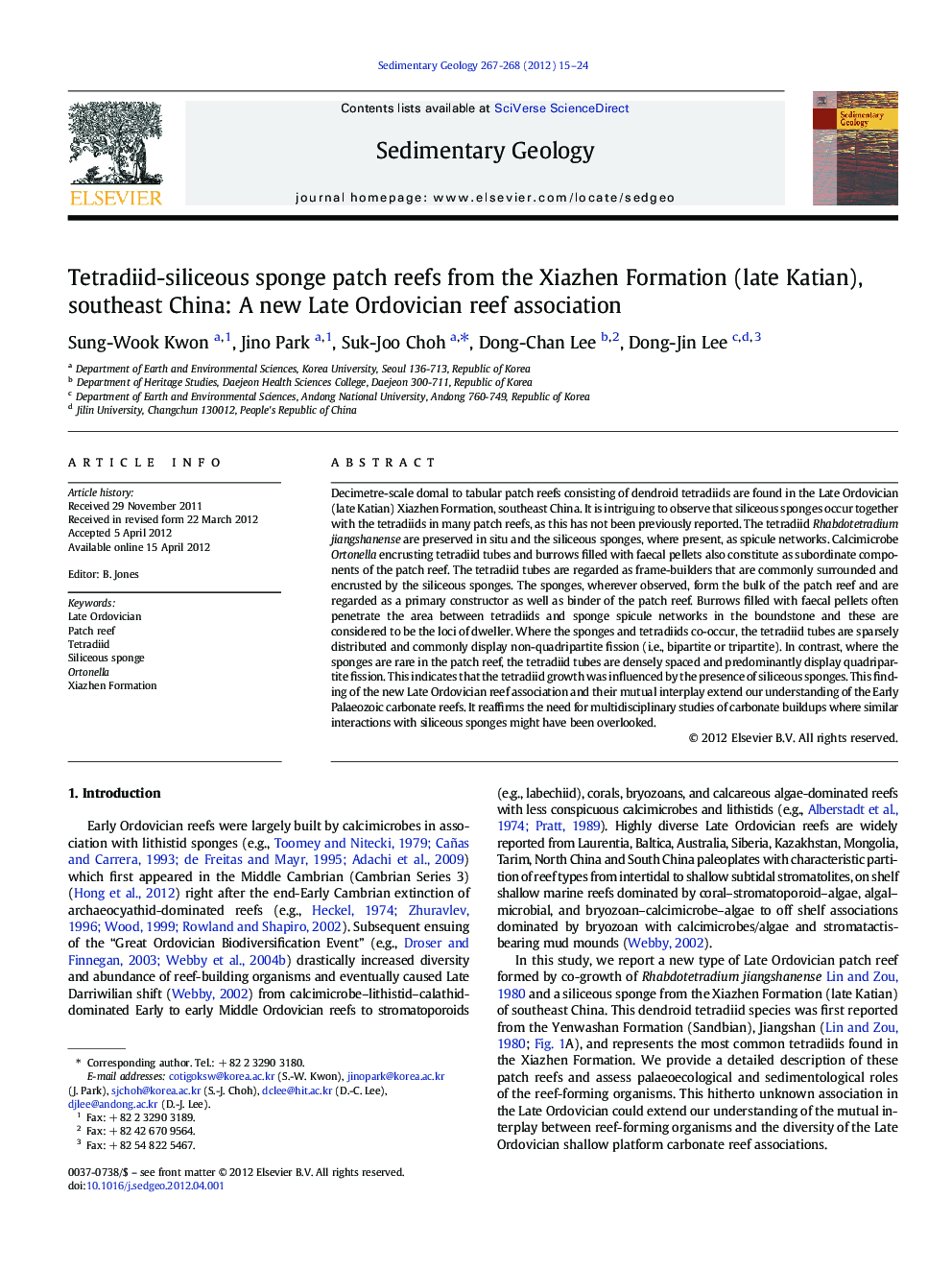| Article ID | Journal | Published Year | Pages | File Type |
|---|---|---|---|---|
| 4689757 | Sedimentary Geology | 2012 | 10 Pages |
Decimetre-scale domal to tabular patch reefs consisting of dendroid tetradiids are found in the Late Ordovician (late Katian) Xiazhen Formation, southeast China. It is intriguing to observe that siliceous sponges occur together with the tetradiids in many patch reefs, as this has not been previously reported. The tetradiid Rhabdotetradium jiangshanense are preserved in situ and the siliceous sponges, where present, as spicule networks. Calcimicrobe Ortonella encrusting tetradiid tubes and burrows filled with faecal pellets also constitute as subordinate components of the patch reef. The tetradiid tubes are regarded as frame-builders that are commonly surrounded and encrusted by the siliceous sponges. The sponges, wherever observed, form the bulk of the patch reef and are regarded as a primary constructor as well as binder of the patch reef. Burrows filled with faecal pellets often penetrate the area between tetradiids and sponge spicule networks in the boundstone and these are considered to be the loci of dweller. Where the sponges and tetradiids co-occur, the tetradiid tubes are sparsely distributed and commonly display non-quadripartite fission (i.e., bipartite or tripartite). In contrast, where the sponges are rare in the patch reef, the tetradiid tubes are densely spaced and predominantly display quadripartite fission. This indicates that the tetradiid growth was influenced by the presence of siliceous sponges. This finding of the new Late Ordovician reef association and their mutual interplay extend our understanding of the Early Palaeozoic carbonate reefs. It reaffirms the need for multidisciplinary studies of carbonate buildups where similar interactions with siliceous sponges might have been overlooked.
